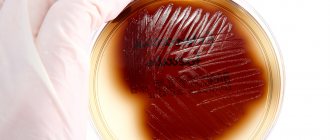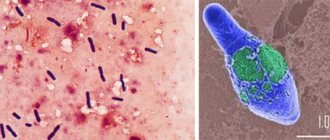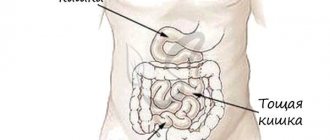Vaginal dysbiosis (dysbacteriosis) is a disruption of the normal microflora of the vagina. Most women suffer from this disease to one degree or another.
When the microflora is disturbed, the balance between the bacteria that are normal inhabitants of the vagina changes. At the same time, the number of lacto- and bifidobacteria decreases and the number of some other pathogen increases. This other pathogen may be one of the key cells (then gardnerellosis, candidiasis, etc. develop), it may be one of the sexually transmitted infections (trichomoniasis, chlamydia), or it may be any saprophytic pathogen (Escherichia coli, Proteus, streptococci, staphylococci etc.).
Vaginal dysbiosis and genital infections
Sexual infections are always associated with a violation of the vaginal microflora. On the one hand, normal microflora will not allow the development of a sexually transmitted infection in a woman, and if a sexually transmitted infection is detected, the microflora cannot but be disturbed. On the other hand, the appearance of a pathogen of any sexually transmitted disease (STD) in the vagina shifts the pH, causes an inflammatory reaction and further contributes to the progression of microflora disorders.
A situation in which only one STD pathogen lives in a woman’s vagina almost never arises. Sexually transmitted infections, one or more, are always in association with opportunistic microflora. And this should always be taken into account when treating STDs. Otherwise, a situation may arise in which antibiotics completely kill the STD pathogen, and the number of opportunistic infections only increases.
STD treatment
in women, it must necessarily end with the restoration of the vaginal microflora. If we are talking about serious infections (chlamydia, trichomonas) or several STDs, then it first makes sense to carry out antibacterial therapy against them, and then begin to restore the vaginal microflora in the next course. In less complex situations, it makes sense to first carry out a comprehensive diagnosis of the entire urogenital microflora, and then restore it while simultaneously eliminating sexually transmitted infections.
Classification and stages of development
There are the following types of vaginosis, depending on the result obtained after taking a vaginal smear from a woman:
- Compensated BV. In this case, the number of lactobacilli in the smear is reduced. The compensated form has no symptoms and is detected as a result of the study. This type is often observed in healthy women.⁵
- Subcompensated BV. The smear contains a small amount of lactobacilli and a large amount of opportunistic flora. With this form, clinical symptoms of bacterial vaginosis appear.
- Decompensated BV. Microscopy reveals only opportunistic microflora. The clinic of vaginal dysbiosis is clearly expressed. With the active proliferation of opportunistic bacteria, this form can also lead to nonspecific vaginitis - an inflammatory disease of the vagina.
Vaginitis is an inflammation of the vaginal mucosa that occurs due to infection of the genital tract. It manifests itself as profuse purulent discharge with a putrid odor, redness, itching and burning in the vulva area.
The course of vaginosis can be:
- Acute or torpid. In this case, the disease develops once, and relapses of the disease after treatment are not observed.
- Asymptomatic. Occurs in approximately half of all cases of BV. The asymptomatic course does not manifest itself clinically, but is recorded through research.
- Monosymptomatic. The only symptom with this form is vaginal discharge.
- Polysymptomatic. This form actively manifests itself; various combinations of BV symptoms and relapses of the disease are possible.
Vaginal dysbiosis and intestinal diseases
Many diseases of the gastrointestinal tract lead to disruption of the normal intestinal microflora and the development of dysbacteriosis. With intestinal dysbiosis, approximately the same thing happens as with vaginal dysbiosis - a large number of some bacteria live in the intestines.
The wall of the rectum is in close contact with the wall of the vagina, bacteria easily pass through it. In cases of severe intestinal dysbiosis, disruption of the vaginal microflora is always caused by this, and as a rule, one of the intestinal infections is sown from the vagina - Escherichia coli, enterococci, etc.
Treatment of vaginal dysbiosis
in such a situation it is extremely difficult, the probability of relapse of the disease is very high. Restoring normal vaginal microflora in such a situation is possible only with simultaneous treatment of intestinal diseases.
Does dysbiosis exist?
It is now a scientific fact that there is a state of disturbance in the composition and function of microflora. The term “Disbiosis” is now very actively used, including in foreign literature.
The mechanisms of influence of intestinal microorganisms on the development of a number of diseases are being studied. Among them:
- inflammatory bowel diseases (Crohn's disease and ulcerative colitis)
- irritable bowel syndrome
- colon cancer
- acute gastroenteritis (acute infectious diarrhea)
- antibiotic-associated diarrhea and its most severe manifestation, pseudomembranous colitis.
It has also been shown that there are changes in the composition of the intestinal microflora in extraintestinal diseases:
- obesity
- chronic liver diseases
- diabetes
- metabolic syndrome
This is not the entire list, but only the most pressing and real problems.
But whether intestinal dysbiosis/dysbiosis is the cause or consequence of these diseases - today there is no clear answer. Changes in the composition of the intestinal microflora are only one of the possible manifestations or factors in the development of these diseases, while the specific mechanisms of mutual influences are not yet clear.
Is there a diagnosis of “Dysbacteriosis”? There really is no such diagnosis in the modern classification of diseases! Considering dysbiosis as an independent disease, or even more so the cause of almost any complaint, is wrong!
Therefore, if a doctor diagnoses “dysbacteriosis” and begins to “treat” it, then you are either healthy or the true cause of the complaints has not been found! The second one is worse. Under the guise of “dysbiosis” and in the absence of correct diagnosis and treatment, the disease can progress, and this is already harmful to health! But to be alarmed, there must be complaints , and not just changes in stool cultures for dysbacteriosis.
Vaginal dysbiosis and sexual partner
Most often, a violation of the vaginal microflora in a woman does not cause any problems for her sexual partner, even with regular sexual activity without the use of contraception. In some cases, when there is severe vaginal dysbiosis, a man may develop the phenomena of balanoposthitis and nonspecific urethritis. But this usually only happens if the man already had a predisposition to these diseases; they will not develop in a completely healthy body.
No disease of the sexual partner, with the exception of sexually transmitted diseases, has an effect on the vaginal microflora in a woman. Treatment of vaginal dysbiosis in women does not require mandatory treatment of the sexual partner, unless at least one of them is diagnosed with a sexually transmitted infection.
Diagnosis of bacterial vaginosis
Diagnosis is made based on the characteristic symptoms of the disease, which the doctor identifies during the examination, and laboratory data:
- During a gynecological examination, the doctor takes a smear from the upper third of the vagina and the vaginal part of the cervix. Next, this smear is stained with reagents to identify various bacteria and examined under a microscope in the laboratory. Also, under a microscope, the so-called “key cells” are determined - cells of the vaginal mucosa with various bacteria tightly attached to them. Microscopy is a very accurate and sensitive method for detecting vaginal dysbiosis.
- An amino test is used to quickly diagnose bacterial vaginosis. A 10% solution of potassium hydroxide is added to vaginal discharge. An increase in the specific fishy odor indicates the active activity of anaerobic bacteria in the vagina. These microbes produce volatile amines, causing foul-smelling discharge and causing bacterial vaginosis.
- To clarify the diagnosis, the vaginal acid-base balance (pH) is measured. With vaginal dysbiosis, this indicator shifts to the alkaline side due to a decrease in the number of healthy lactic acid bacteria in the vagina, and the pH becomes higher than 4.5.
- PCR diagnostics. This is a very sensitive and accurate research method. To interpret a vaginal smear, various test systems are used, such as florocenosis, femoflor.
The diagnosis of bacterial vaginosis is made when three of the four Amsel criteria are met:
- Homogeneous grayish-white vaginal discharge with a fishy odor.
- Detection of “key cells” by microscopy.
- Positive amino test.
- Vaginal pH above 4.5.¹
Self-diagnosis of vaginosis
There are special test strips for self-determination of vaginal acid-base balance. When using them, you need to apply vaginal fluid to the sensor element and wait a few seconds. The color of the strip indicator will change depending on the acidity of the discharge. Thus, you can suspect that you have bacterial vaginosis at home. In this case, the pH will be higher than the required 4.5. If the pH is acidic and there are unpleasant symptoms (itching, burning), there is a high probability of candidiasis - a fungal infection.
Vaginal dysbiosis and pregnancy
Pregnancy is one of the factors that can provoke an exacerbation of vaginal dysbiosis. During pregnancy, discharge, itching or burning in the genitals, pain during intercourse, etc. may appear or intensify. This is due to the fact that during pregnancy a woman’s body undergoes serious hormonal changes, which cannot but affect both the immune system and the vaginal microflora.
Complete treatment of vaginal dysbiosis during pregnancy is not possible. Even if this treatment is not associated with taking antibiotics, which is extremely undesirable during pregnancy, it is always associated with immunocorrection, and this is completely unacceptable during pregnancy. Therefore, the doctor’s task during an exacerbation of vaginal dysbiosis in a pregnant woman is only to eliminate the symptoms and prepare the woman for childbirth.
In our clinic, for this purpose, a course of procedures is carried out that, if not normalize the situation, then make it more tolerable. Local treatment carried out in this case is completely harmless to the fetus. If necessary, this treatment can be carried out repeatedly throughout pregnancy.
Signs of incompatibility of the microflora of partners
Normally, the process of adaptation of partners at the microflora level goes unnoticed and does not take much time; as a rule, this happens after several sexual acts. But if a woman or man has problems with the microflora, adaptation slows down, and partners may experience such unpleasant signs as:
- constantly present irritation in the external genital area (itching, burning, pain, more or less pronounced swelling and redness in the intimate area);
- Uncharacteristic discharge (for example, heavy discharge, with an unpleasant odor, changed color or consistency);
- discomfort in the mucous membrane of the genital organs (constant, during sexual intercourse or only after intimacy);
- a woman’s inability to receive satisfaction from intimacy With a long course of dysbiosis, microtraumas may appear on the mucous membrane of the external genitalia, which become a gateway for pathogenic bacteria. In turn, secondary infections are sometimes accompanied by rashes.
- Without treatment, all of these symptoms can worsen and seriously disrupt the quality of life of men and women and reduce their self-esteem. Thus, what began as incompatibility of microflora can sooner or later provoke psychological disorders and even separation of the couple.
It should be remembered that the exchange of microorganisms occurs with every unprotected sexual contact. Therefore, even those couples whose relationship dates back more than a dozen years can detect symptoms of incompatibility between the microflora of partners.
Vaginal dysbiosis in girls
Disorders of the vaginal microflora occur in girls who have not begun sexual activity with approximately the same frequency as in women who are sexually active. This is due to several other factors - hormonal instability, the formation of a cycle, as well as the anatomical features of the structure of the hymen.
Vaginal dysbiosis in girls rarely manifests itself as heavy discharge, since the openings of the hymen, as a rule, do not allow them to be removed from the vagina in the quantity in which they are formed. Therefore, stagnation of vaginal discharge develops, and the likelihood of developing inflammatory diseases in virgins is higher. On the other hand, when sexual activity begins with the first sexual intercourse, a large number of bacteria are thrown from the vagina into the bladder, and this can lead to the so-called “honeymoon cystitis”.
Treatment of vaginal dysbiosis in virgin girls is somewhat difficult due to the fact that the structure of the hymen does not always allow for proper treatment of the vagina with medications. In some cases, it is even necessary to resort to artificial disruption of the integrity of the hymen - hymenectomy.
At SM-Clinic, gynecologists, after conducting examinations and tests, will identify the exact causes of vaginal dysbiosis and prescribe effective comprehensive treatment that will lead to the restoration of normal vaginal microflora.
Causes of bacterial vaginosis
Various microorganisms, of which there are more than 40 species, constantly multiply in the lumen of the vagina. Some of them are called opportunistic. This means that they usually do not lead to the development of diseases, but can cause them under certain conditions (for example, as a result of weakening of the body due to illness, changes in the vaginal environment, etc.). Normally, their vital activity is controlled by:
- Hormonal system. Hormones regulate the rate of renewal of the mucous membrane, to the cells of which bacteria can attach.
- Immunity. The immune system produces antibodies that are found on the surface of the vaginal mucosa. These substances are needed to prevent the attachment and penetration of bacteria into epithelial cells.
- Healthy microflora. Most of the vaginal microflora consists of lactobacilli. They are otherwise called Doderlein sticks. These include, for example, L. acidofilus, L. casei, L. fermentum, L. cellobiosus, L. jensenii, L. gasseri, L. crispatus, L. plantarum, L. brevis, L. salivarius. Collectively they are referred to as Lactobacillus spp. Lactobacilli produce lactic acid, which creates an acidic environment in the vagina (vaginal pH should be 3.8-4.4).¹ An acidic environment is needed to prevent the proliferation of pathogens.
Important! There are times in a woman's life when the number of lactobacilli in the vagina decreases, causing its pH to become more alkaline. This happens during pre-puberty (before menstruation), during pregnancy and after menopause. Accordingly, at this time the risk of developing vaginal dysbiosis is higher.
Disruption of at least one of the control systems causes excessive proliferation of pathogenic microorganisms. Previously, it was believed that bacterial vaginosis was caused by Gardnerella vaginalis, which is why it is sometimes called gardnerellosis (Fig. 1). However, it has now been established that vaginal dysbiosis can be caused by a variety of types of bacteria, including: Bacteroides, Peptostreptococcus, Clostridiales spp., Fusobacterium, Eubacterium, etc. Most often, the disease is provoked by several types of microorganisms.
Figure 1. Bacterial vaginosis. Source: Artemida-psy / Depositphotos











